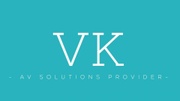In today's dynamic world of visual communication, LED screens have become an integral part of advertising, entertainment, and information dissemination. The demand for high-quality displays that captivate audiences is growing exponentially. However, maintaining these LED screens can be a challenge, especially when they are installed in locations that are not easily accessible. This is where front maintenance LED screens shine. In this guide, we will explore the benefits, applications, and features of front maintenance LED screens, which are transforming the way we approach display technology.
Understanding Front Maintenance LED Screens
Front maintenance LED screens, also known as front-access LED displays, are a specialized type of LED screen that offers easy access for maintenance and servicing from the front of the screen. Unlike traditional LED screens that require access from the rear, front maintenance screens are designed with accessibility in mind, making them ideal for installations in tight spaces or against walls where rear access is limited or impossible.
Benefits of Front Maintenance LED Screens
Space Efficiency: Front maintenance screens are space-efficient because they can be installed closer to walls or in areas with limited space behind the screen, making them suitable for retail stores, airports, shopping malls, and other crowded locations.
Quick and Easy Servicing: The front-access design allows for effortless maintenance and repairs without the need to dismantle the entire screen. Technicians can quickly access components for servicing, minimizing downtime.
Cost Savings: Reduced maintenance time and labor costs translate to cost savings for businesses and organizations that use front maintenance LED screens.
Minimized Disruption: Front maintenance screens are less disruptive to surrounding environments during maintenance, as there is no need to access the rear of the screen. This is especially important in busy public spaces.
Customization: Front maintenance LED screens can be customized to fit specific project requirements, including size, resolution, and shape, offering flexibility for creative installations.
Applications of Front Maintenance LED Screens
Retail Displays: Front maintenance screens are commonly used in retail environments for dynamic product displays, advertisements, and interactive kiosks. Their sleek design and easy maintenance make them an attractive choice for storefronts and malls.
Transportation Hubs: Airports, train stations, and bus terminals use front maintenance LED screens for real-time flight information, wayfinding, and advertising. Their reliability and low maintenance requirements are crucial in these high-traffic areas.
Corporate Lobbies: Many corporate offices feature front maintenance LED screens in their lobbies for branding, information dissemination, and corporate communications. These screens convey professionalism and innovation.
Hospitality: Hotels and resorts often incorporate front maintenance LED screens for digital signage, event promotions, and guest information. The screens enhance guest experiences while requiring minimal maintenance.
Sports Arenas and Stadiums: Front maintenance LED screens are used in sports venues for live broadcasts, replays, and advertising. Their high visibility and ease of maintenance make them suitable for these dynamic environments.
Features to Consider
When choosing front maintenance LED screens for your project, consider the following features:
Pixel Pitch: The pixel pitch determines the screen's resolution and viewing distance. Choose a pixel pitch that suits your content and viewing environment.
Brightness and Color Accuracy: Ensure that the screen's brightness and color accuracy meet your requirements for indoor or outdoor use.
Modularity: Opt for screens with modular designs, allowing for easy replacement of individual modules or sections in case of damage or malfunction.
Reliability: Look for screens from reputable manufacturers with a track record of producing reliable and durable displays.
Protection: Consider screens with IP-rated protection against dust and water, especially for outdoor installations.
Control and Connectivity: Ensure the screens are compatible with your content management systems and offer flexible connectivity options.
For More Info:-






Comments